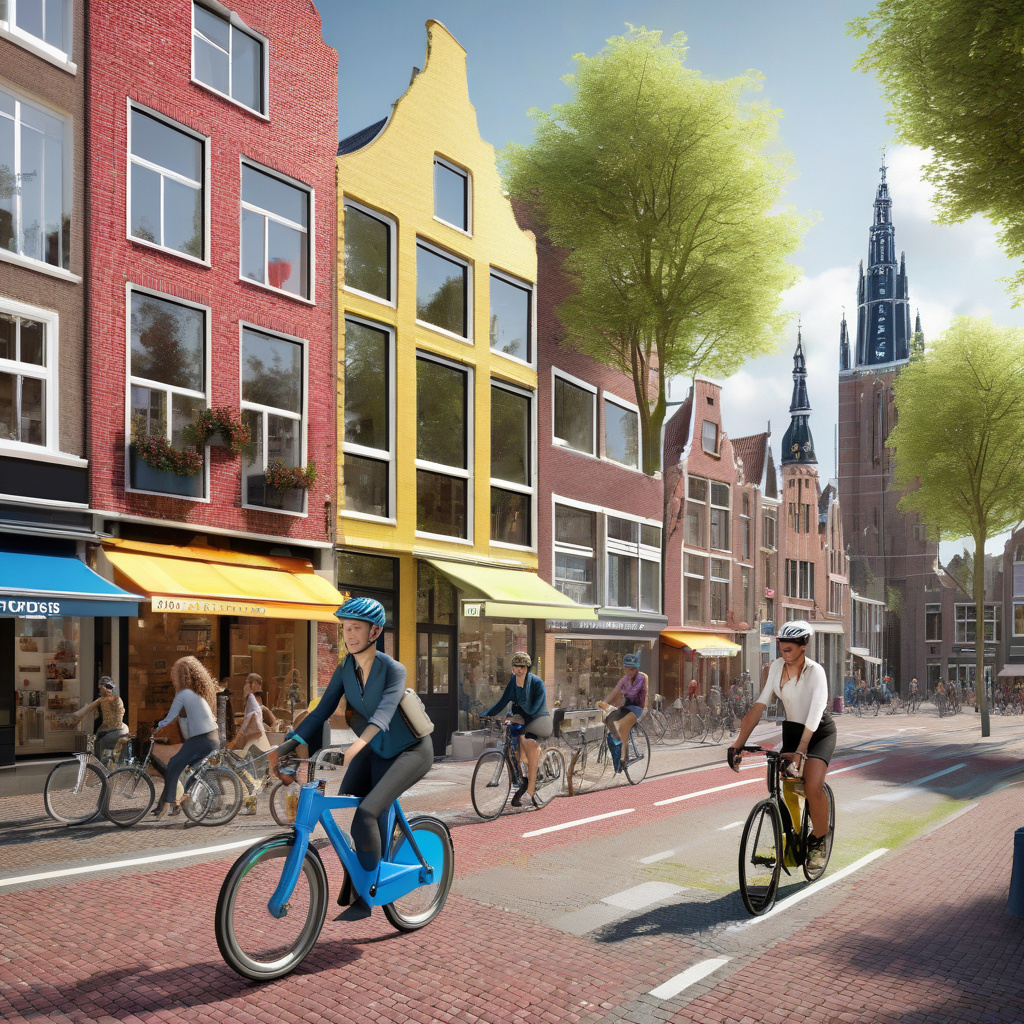Cycling Safety Gets a High-Tech Upgrade in Delft
Amid growing concerns over cyclist safety, Dutch researchers are pioneering smart technology to better understand road behavior and reduce accidents. In the Netherlands, where cycling is a popular mode of transportation, safety on the roads is of paramount importance. With an increasing number of cyclists sharing the streets with cars and pedestrians, innovative solutions are needed to ensure safe and efficient travel for all road users.
The city of Delft, known for its picturesque canals and historic architecture, has become a hub for cutting-edge research in cycling safety. Researchers at the Delft University of Technology have been at the forefront of developing high-tech solutions to enhance cyclist safety and reduce the risk of accidents. By harnessing the power of smart technology, such as sensors, cameras, and data analytics, these researchers are gaining valuable insights into cyclist behavior on the roads.
One of the key innovations in cycling safety is the development of smart bike lanes that can detect and communicate with cyclists in real-time. These bike lanes are equipped with sensors that can detect the presence of cyclists and provide them with important information, such as upcoming hazards or changes in road conditions. By alerting cyclists to potential dangers, such as a car door opening or a pedestrian crossing, these smart bike lanes help to prevent accidents and improve overall road safety.
In addition to smart bike lanes, researchers in Delft are also exploring the use of wearable technology to enhance cyclist safety. Wearable devices, such as smart helmets and vests, are being developed to provide cyclists with vital information while on the road. For example, a smart helmet equipped with sensors can detect sudden stops or changes in speed and alert the cyclist to take evasive action. Similarly, a smart vest with built-in lights and indicators can improve visibility and communication between cyclists and other road users.
Furthermore, researchers are leveraging data analytics to gain a deeper understanding of cyclist behavior and identify patterns that may lead to accidents. By analyzing large datasets collected from sensors and cameras installed along bike lanes, researchers can pinpoint high-risk areas and develop targeted interventions to improve safety. For instance, by identifying intersections with a high incidence of accidents, city planners can implement design changes or traffic management strategies to reduce the likelihood of collisions.
The work being done in Delft is not only advancing the field of cycling safety but also setting a new standard for smart transportation systems worldwide. As cities around the globe grapple with the challenges of increasing urbanization and traffic congestion, the need for innovative solutions to improve road safety has never been greater. By embracing technology and data-driven approaches, like those being developed in Delft, we can create safer and more sustainable urban environments for cyclists and all road users.
In conclusion, the high-tech upgrade to cycling safety in Delft represents a significant step forward in the quest to create safer roads for cyclists. By harnessing the power of smart technology, wearable devices, and data analytics, researchers in Delft are revolutionizing the way we approach road safety and paving the way for a more secure and efficient cycling experience. With their pioneering work, Dutch researchers are demonstrating that the future of cycling safety is not only bright but also technologically advanced.
cycling, safety, technology, Delft, innovation












